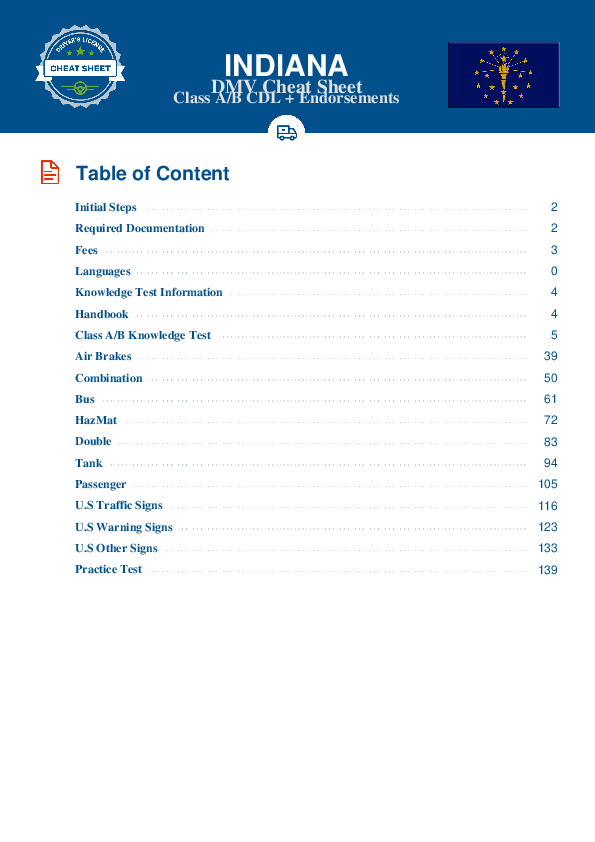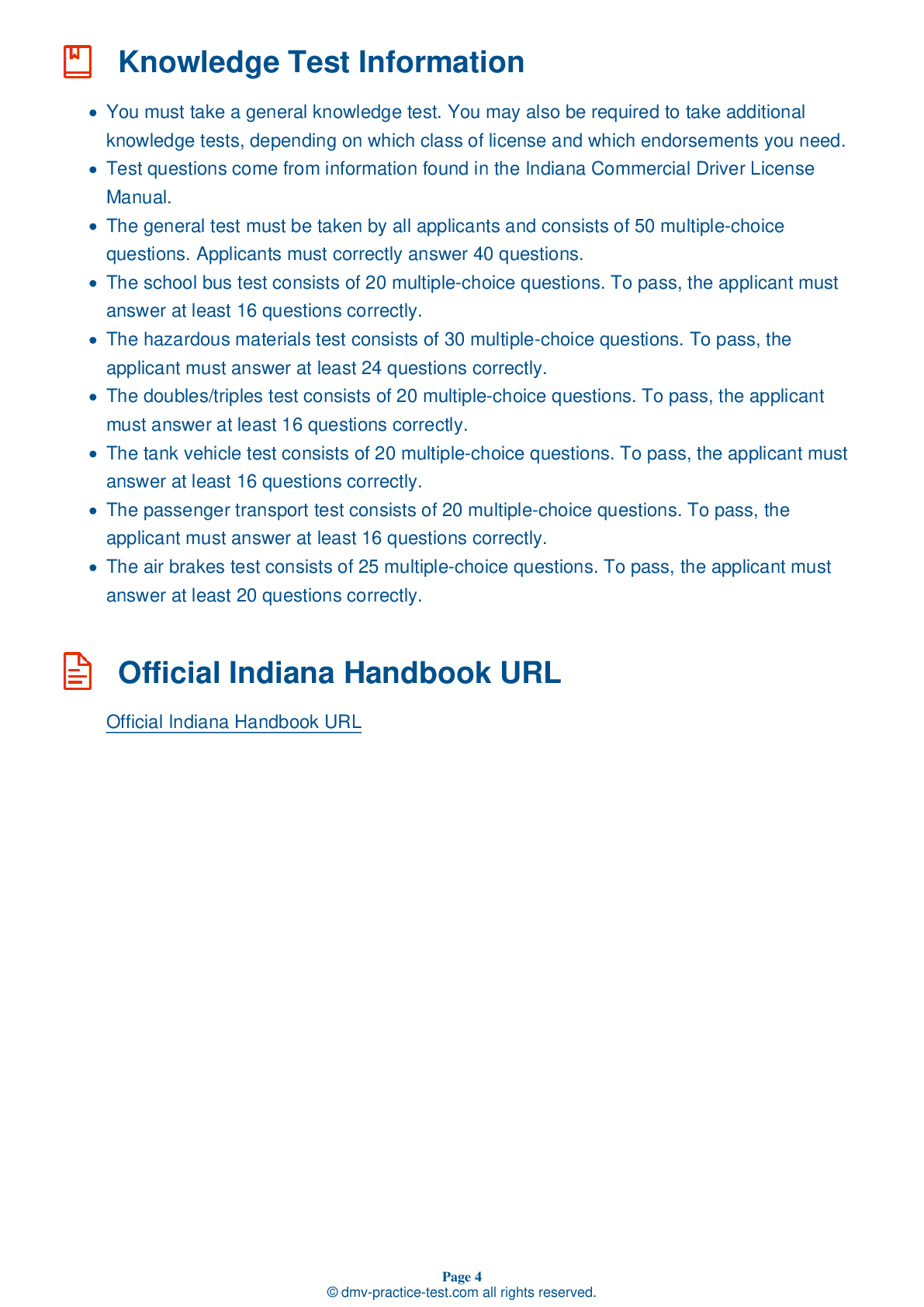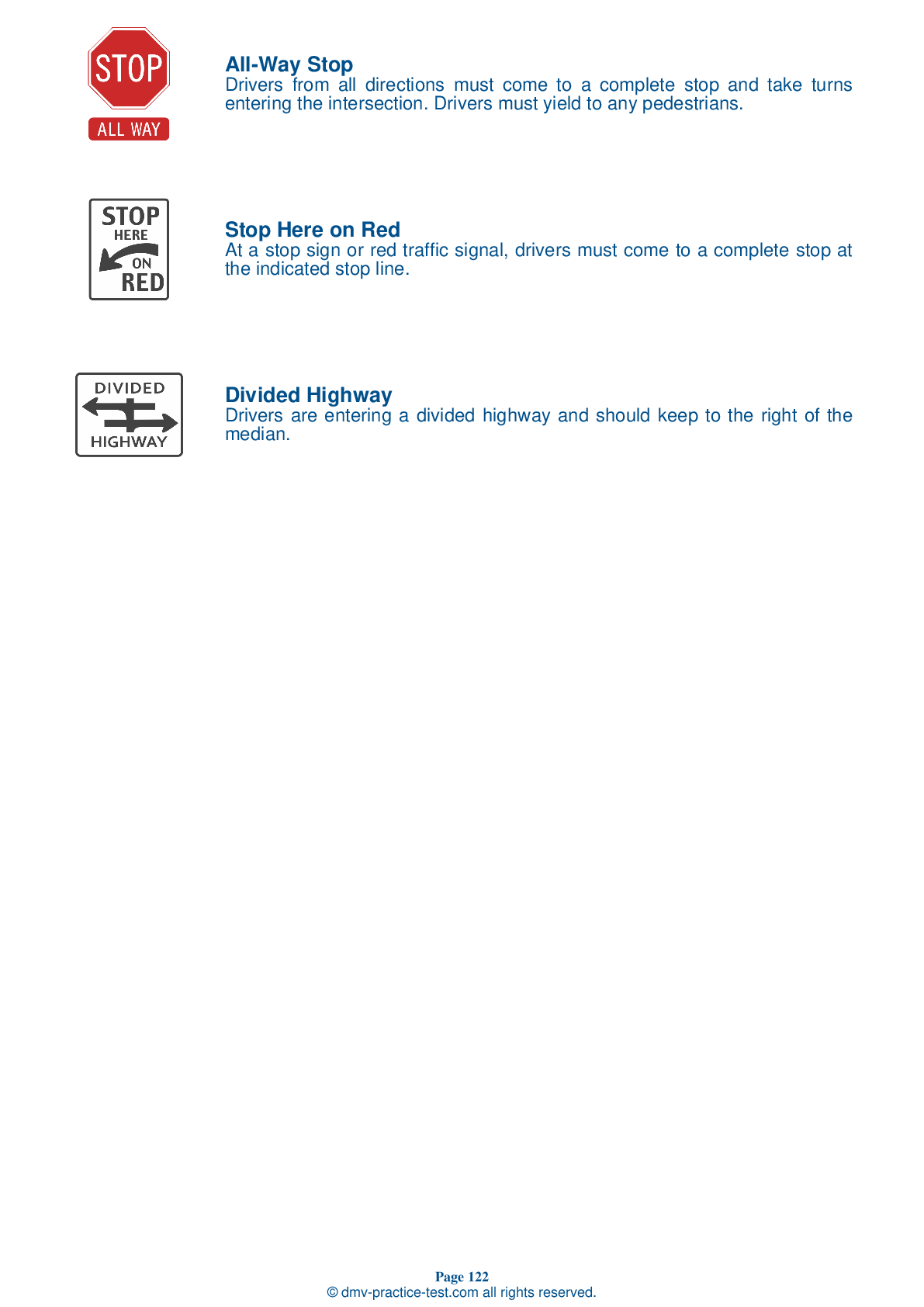Air Brakes #2
Air Brakes Endorsement Test | Indiana 2025 #2 Page 4 of 4
Train for FREE online with our Indiana CDL air brake test. The official exam test consists of several obligatory parts, with all of them checking your knowledge of different blocks of road rules. If you need to obtain a IN Class A/Class B driver license in 2025, practice as much as possible. Free sample tests published on our website will help you check and improve your knowledge and boost your grades. Please bear in mind that the requirements for CDL may vary from state to state.
25
20
20
19 . Before a vehicle with dual air brakes is driven, pressure of at least ____ should be built up in both braking systems.
100 psi
Before driving a vehicle with a dual air brake system, allow time for the air compressor to build up pressure of at least 100 psi in both the primary and secondary systems.
20 . Foundation brakes are used:
At each wheel.
Foundation brakes are used at each wheel. The most common type is the S-cam drum brake.
21 . If one air system in a dual air brake system is very low on pressure:
Lights on the outside of the tractor will flash.
In a dual air brake system, if one of the air systems gets very low on pressure, either the front or rear brakes will not be operating fully. You should bring your vehicle to a safe stop and have the air system repaired.
22 . Truck tractors with air brakes that were built on or after March 1, 1997 are equipped with:
Anti-Lock Braking Systems (ABS).
Truck tractors with air brakes that were manufactured on or after March 1, 1997 are required to be equipped with Anti-Lock Braking Systems (ABS). ABS is required in any other type of vehicle with air brakes that was manufactured on or after March 1, 1998.
23 . Brakes can get out of adjustment:
If brakes on one side are used more often than brakes on the other side.
Brakes are particularly prone to getting out out adjustment if they are hot. Use proper braking techniques to avoid letting your brakes overheat.
24 . What does the air compressor governor do?
Controls the temperature of the air leaving the air storage tanks.
In an air brake system, the air compressor governor controls when the air compressor pumps air into the air storage tanks.
25 . What color is the low air pressure warning light?
Purple
A low air pressure warning signal is required in vehicles with air brakes. The warning light is usually red and may be accompanied by a buzzer.
2025 Indiana | Frequently Asked Questions
To acquire a CDL Passenger endorsement in Indiana, you must first have a Commercial Driver's License (CDL). Then, you need to pass the Passenger Transport Test at a Bureau of Motor Vehicles (BMV) branch. The test covers topics like vehicle inspection, loading and trip start, on the road, after-trip vehicle inspection, prohibited practices, and use of brake-door interlocks.
To obtain a CDL Passenger license in Indiana, you must be at least 21 years old, have a valid regular driver's license, pass a vision test, and complete a medical examination. You must also pass a written knowledge test on operating a passenger vehicle and successfully complete the skills test in the type of vehicle you will be driving.
While Indiana doesn't specifically require training for a CDL Passenger endorsement, it's beneficial to have practical experience and knowledge about operating a commercial vehicle. Training can help prepare you for the written knowledge test and the skills test. Experience driving similar vehicles can also be advantageous. Remember, you'll need to pass both tests at a BMV branch.
Yes, in addition to the general CDL test, you must pass the Passenger Transport written test to receive a CDL Passenger endorsement in Indiana. This test covers specific rules and safety regulations related to transporting passengers. If you plan to drive a school bus, you may also need to pass a School Bus endorsement test.
During the CDL Passenger endorsement skills test in Indiana, you'll need to demonstrate your ability to inspect your vehicle, check safety equipment, and ensure passenger comfort. You'll also need to show your skills in managing space around the vehicle, stopping and starting, turning, merging into traffic, and backing up safely. Measures for emergency situations will also be assessed.
No, you cannot legally transport passengers in Indiana without a valid CDL Passenger endorsement. This endorsement is required for drivers who wish to operate a vehicle designed to carry 16 or more passengers, including the driver. Driving without the proper licensing can result in serious penalties, including fines and potential suspension of your driving privileges.
Yes, you can add the CDL Passenger endorsement to your existing Commercial Driver's License (CDL). You don't need a new license application. However, you must pass the Passenger Transport written test and, if applicable, the skills test. Once you pass, the endorsement will be added to your current CDL.
Yes, there are specific restrictions for drivers with a CDL Passenger endorsement in Indiana. These include not being able to operate a vehicle if their blood alcohol concentration is 0.04% or higher, not having any trace of a controlled substance in their system, and not committing any traffic violations while operating a commercial vehicle. Violating these can result in disqualification or suspension of the endorsement.
Yes, in Indiana, you must be at least 18 years old to get a CDL for intrastate driving (within state lines) and at least 21 years old for interstate driving (across state or national borders). These age requirements also apply to obtaining a CDL Passenger endorsement. You must also meet all other general CDL requirements.
With a CDL Passenger endorsement, you are eligible to operate vehicles such as buses, shuttles, and vans that are designed to carry 16 or more passengers, including the driver. This endorsement also allows you to drive smaller vehicles that carry fewer passengers. However, remember that specific vehicle types might require additional endorsements, like a School Bus endorsement for school buses.



